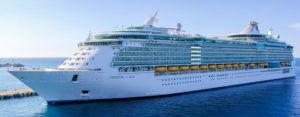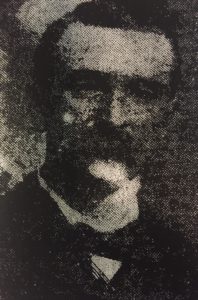Our cruise ship was on the outer edge of a hurricane and, I admit, I was nervous.
When it was built, in 2006, the 154,407-ton Freedom of the Seas was the largest cruise ship in the world. But it was rocking and rolling that night like a big yacht. Lounge chairs had been tied down and passengers were not allowed on the decks outside, to keep us away from the railings.

I had served in the U.S. Navy, on a much smaller ship, a heavy cruiser, in a much bigger storm [Typhoon Nancy, September 1961], but I felt a lot safer then. My ship, USS Los Angeles, could be buttoned up, top to bottom, each small compartment sealed off from the others.
A cruise ship is nothing like a warship.

According to Royal Caribbean International, Freedom of the Seas can accommodate 3,634 passengers and 1,300 crew on a total of 18 decks. It has a casino, auditoriums, an ice skating rink, a two-story dining room and unobstructed passageways that looked like they were as long as a city block. Longer, maybe. Freedom of the Seas is 1,112 feet in length and the passageways down each side go on and on.
If that ship, any cruise ship for that matter, starts coming apart it’s going to sink like a stone.
OK, so really, how rough was it?
It was our last night at sea and, as directed, we had packed our suitcases and set them in the passageway outside our stateroom, so they could be transferred to shore first thing in the morning.
Donna and I were awakened in the night by a persistent noise –the ship was rolling side to side and the empty clothes hangers in our closet were sliding back and forth, back and forth.
NOTE: So how was the cruise? It didn’t end well, thanks to bad weather, but the rest was terrific.
Coming Monday: Hard Times
